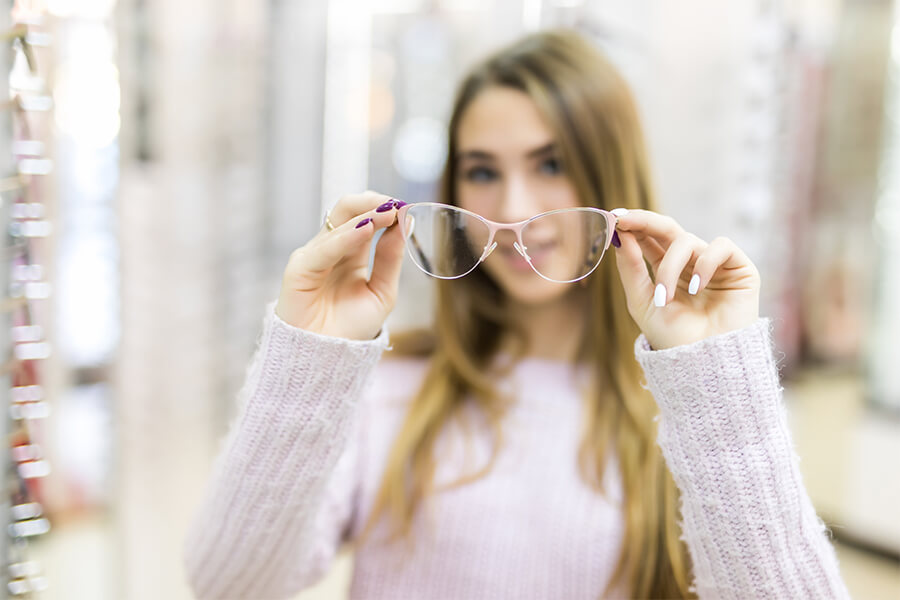
22 May Preventing Blurred Vision: Tips and Techniques for Eye Health
Our eyes are one of the most important organs in our body, but they are also one of the most neglected. As we age, our eyes can become increasingly susceptible to a variety of vision problems, such as blurred vision. The causes of blurred vision can be varied and may include aging, eye strain, and certain medical conditions. In this article, we’ll explore some tips and techniques for preventing blurred vision and maintaining good eye health.
Get regular eye exams
One of the most important things you can do to prevent blurred vision is to get regular eye exams. Many vision problems can be caught and treated early through regular eye exams. Your eye doctor can also check for signs of eye diseases such as glaucoma, cataracts, and macular degeneration, which can cause blurred vision if left untreated.
Wear protective eyewear
Wearing protective eyewear can help prevent eye injuries that can lead to blurred vision. This is especially important if you work in an environment where you are exposed to flying debris or chemicals. Protective eyewear includes safety glasses, goggles, and face shields.
Rest your eyes
Staring at a computer screen or mobile device for long periods can cause eye strain and fatigue, leading to blurred vision. To prevent this, it’s important to take frequent breaks and rest your eyes. Sticking to the 20-20-20 rule can be beneficial; Take a 20-second break after every 20 minutes and stare at something 20 feet away.
Adjust your workspace
Proper ergonomics can help prevent eye strain and fatigue.
Here are a few ways to achieve this:
1- Workspace Lighting: Ensure that the lighting in your workspace is not too bright or too dim. Ideally, you want to have balanced, diffused lighting that doesn’t create harsh glares. Use curtains, blinds, or shades to control natural light from windows, and consider using indirect lighting options such as desk lamps or overhead lights with diffusers.
2- Display Screen Settings: Adjust the brightness and contrast settings on your display screen to a comfortable level. Dimming the screen slightly can help reduce glare.
3- Positioning: Position your workstation and display screen in a way that minimizes direct light sources behind you or directly in front of the screen. This helps to prevent excessive glare.
4- Use Task Lighting: If needed, add task lighting to specific areas of your workspace, such as a desk lamp, to provide focused lighting for specific tasks without causing overall glare.
By implementing these adjustments, you can create a more comfortable and visually-friendly environment that reduces glare and harsh lighting in your workspace.
Eat a healthy diet
A healthy diet can help prevent blurred vision and promote good eye health. Eating foods rich in vitamins A, C, and E, as well as omega-3 fatty acids, can help prevent age-related vision problems. Foods such as leafy greens, citrus fruits, nuts, and fish are all good choices for maintaining good eye health.
Exercise regularly
Regular exercise can help prevent a range of health problems, including those that can affect your eyes. Exercise can help lower blood pressure, reduce the risk of diabetes, and improve blood circulation, all of which can help maintain good eye health.
Quit smoking
Smoking can increase the risk of a range of health problems, including those that can affect your eyes. Smoking can increase the risk of macular degeneration, cataracts, and other eye diseases that can cause blurred vision. Stopping smoking can help reduce your risk of these conditions and maintain good eye health.
Use eye drops
Dry eyes can cause blurred vision and discomfort. Applying eye drops can help moisturize the eyes and deter dryness. Talk to your eye doctor about the best type of eye drops for your needs.
Manage underlying health conditions
Certain medical conditions, such as diabetes and high blood pressure, can increase the risk of vision problems. Managing these conditions through lifestyle changes, medication, and regular medical care can help prevent these problems and maintain good eye health.
Wear proper eyeglasses or contact lenses
Wearing proper eyeglasses or contact lenses can help prevent blurred vision caused by refractive errors, such as nearsightedness or farsightedness. It’s important to get regular eye exams to ensure that your prescription is up to date and that you are wearing the correct type of corrective lenses.
Make sure that your eyeglasses have proper anti-reflection coating which can minimize annoying light reflections and blur, leading to better visual clarity and comfort. It’s a valuable feature to consider when selecting and maintaining your eyewear.
Conclusion
Blurred vision can be a frustrating and concerning problem, but it is often preventable. By following the tips and techniques outlined in this article, you can maintain good eye health and reduce your risk of developing blurred vision. By taking these steps, you can protect your eyes and ensure that you continue to see clearly for years to come.

No Comments